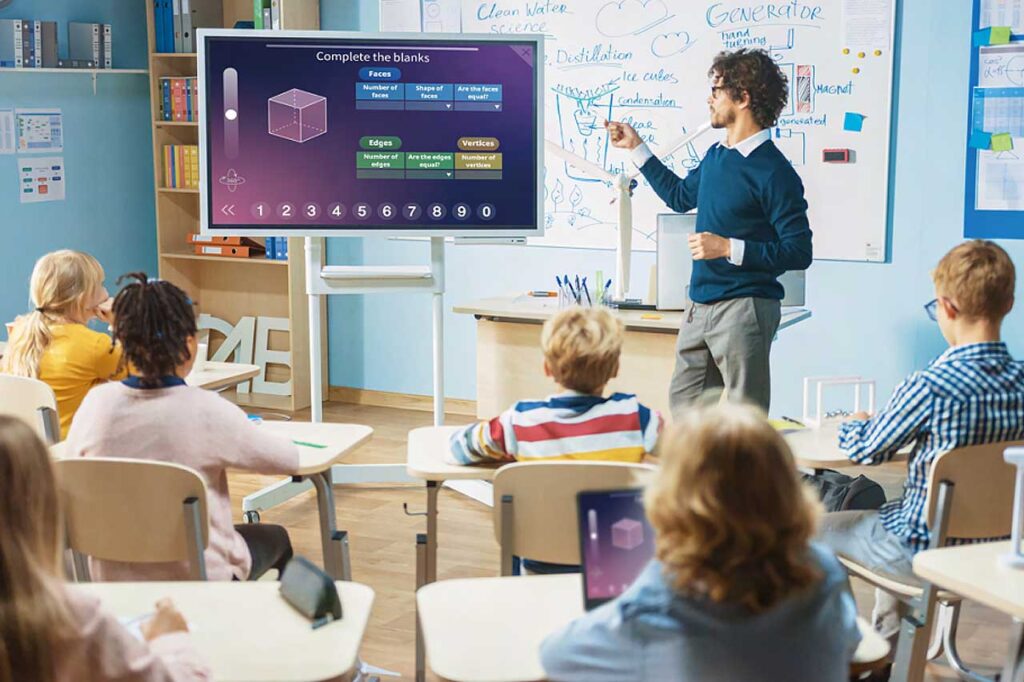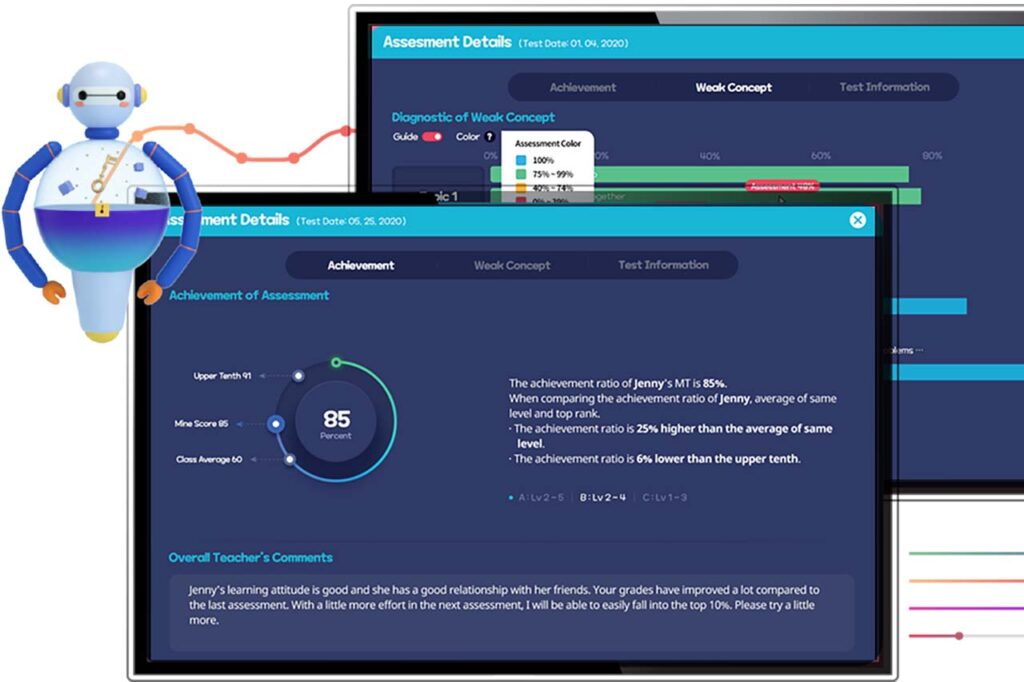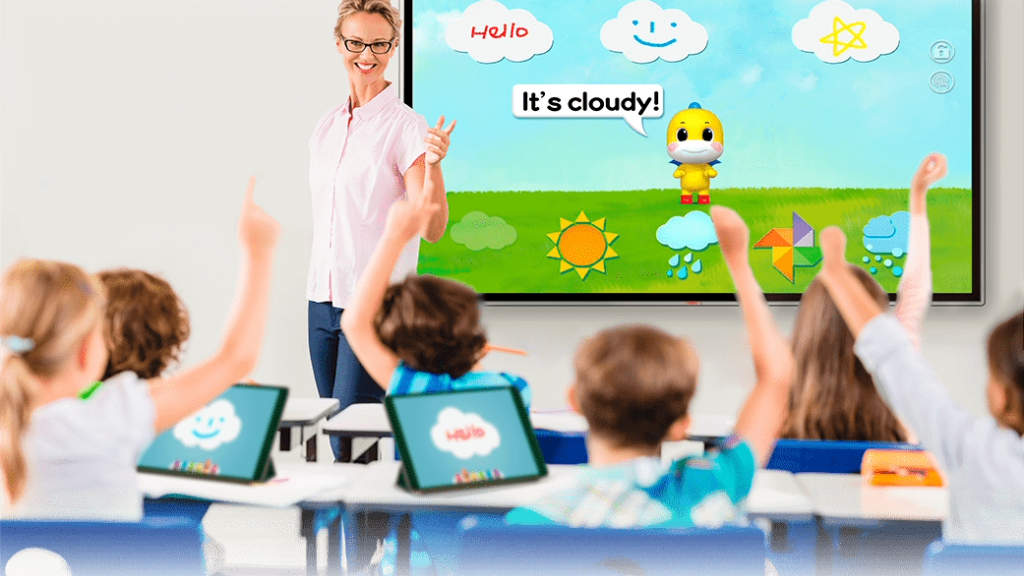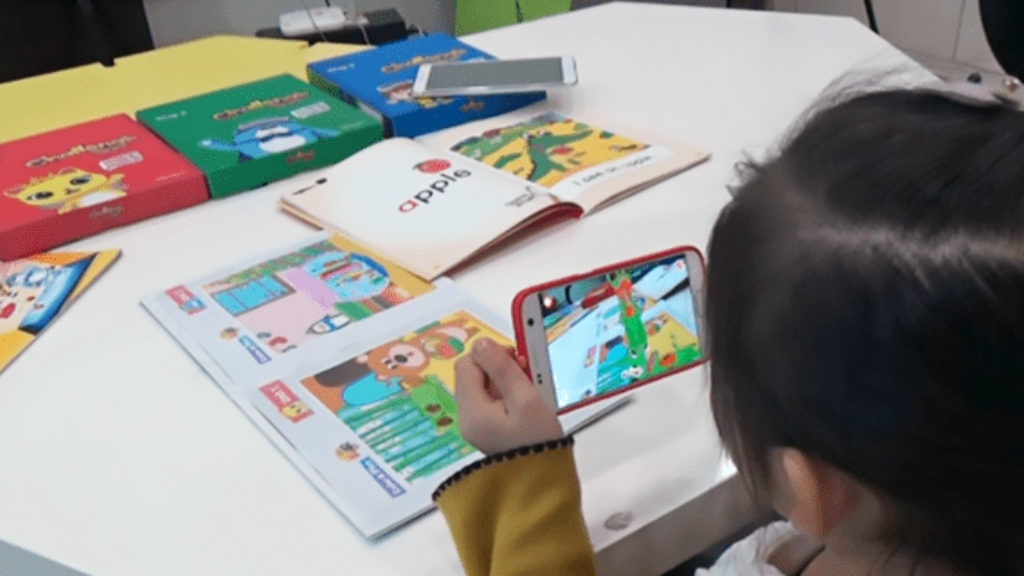Fears and rejections of mathematics that originated in childhood are often not easily corrected in adulthood. Nevertheless, basic mathematics contains knowledge essential for our survival. Primary math is very basic, but it contains core content, so the most important thing for students is to enjoy it. This article presents the definition and necessity of primary math and teacher strategies and solutions for students who avoid math.
What is primary math education?

Definition
What mathematics do students learn in primary school? In general, primary school students learn basic math concepts such as numbers and arithmetic, geometry and measurement, and data analysis. Primary math provides an understanding of numbers and calculations and teaches basic math skills such as arithmetic operations. This helps children better deal with numbers in everyday situations.
Students also learn to analyze data and create graphs. This can help them understand and communicate information about the world around them.
In summary, primary math is a key discipline that improves problem-solving skills while developing children’s mathematical thinking. This subject aims to develop children’s logical thinking while teaching numeracy concepts and approaches.
In learning mathematics, students can actively participate by using concrete materials and tools, and techniques such as calculators. However, before they can become accustomed to the ease of use of technology, they must master basic arithmetic and understand basic concepts.
Why mathematics education is important in primary school
- Primary math classes focus on problem-solving skills to develop children’s logical thinking. Children learn how to solve problems by understanding patterns and sequences, relationships and regularities, and by reasoning and predicting. This helps children develop the ability to understand abstract problems and analyze processes.
- Primary math includes an understanding of geometry and measurement. By understanding shape and space, children can strengthen their visual thinking and improve their problem-solving skills. Children also learn basic units of measurement such as length, weight, and time.
- In other words, primary math is a fundamental subject that plays a critical role in shaping children’s cognitive development. It is also a fundamental skill that we use in all aspects of our lives. Math can be the foundation for the specialized and specific technical and engineering disciplines that students are expected to learn later.
- Primary math plays an important role in children’s school life and is an essential foundation for academic achievement. In primary math lessons, children can develop mathematical thinking and problem-solving skills and lay the foundation for future mathematical learning.
What are the requirements for primary math education?
Primary math goals and key elements
If we take a look at the first-grade math curriculum, we can see that it mostly focuses on teaching students the basics in an effective and fun way. Not only do students get a solid foundation, but they also gain the tools and confidence to learn more advanced concepts later when they have a good grasp of first-grade math. Below you will find some key elements a primary math curriculum should include.
- Developing mathematical reasoning: Mathematics helps develop logical thinking and reasoning skills. The primary math curriculum guides children to learn abstract concepts and procedures for solving problems. It helps children develop intuition and logical thinking to analyze and solve problems.
- Learning essential basic concepts: Primary math provides a foundation for learning mathematical concepts and computational skills. Mastering basic arithmetic operations such as addition, subtraction, multiplication, and division is essential for dealing with numbers in everyday life. In addition, understanding concepts such as fractions, decimals, percentages, and ratios is the foundation for future mathematical learning.
- Strengthening problem-solving skills: The primary math curriculum is designed to help children improve their ability to understand and solve problems. Children practice solving real-world problems by applying mathematical concepts such as patterns, regularities, and graphs. This allows children to apply the concepts they learn to realistic situations and develop creative problem-solving skills.
- Increasing confidence in math: The primary math curriculum helps children develop confidence in mathematics. Learning and mastering mathematical concepts and problem-solving skills can give children a sense of accomplishment and increase their interest and confidence in mathematics. This lays the foundation for future mathematical learning and achievement.

The primary math curriculum is an important building block for children’s academic achievement and future mathematical learning. Through it, children develop mathematical thinking and problem-solving skills and can engage in learning with confidence. This is why a primary math curriculum is essential and must be carefully crafted. If students cannot keep up with the curriculum, they not only fall behind in class, they also lose confidence and interest in the subject.
Competencies primary math teachers should have
Primary math teachers must have a set of competencies to teach mathematics to children. Below you will find the competencies and skills that a primary math teacher must have.
Primary math teachers should have a deep understanding of mathematical concepts and principles. They should be able to answer children’s questions accurately and clearly and to design instructional materials and activities effectively. In addition, teachers must be able to learn and apply various methods and strategies for teaching mathematics. They can deliver effective instructions by using a variety of teaching methods that match students’ learning styles and abilities.

The younger the students, the more important the teacher’s ability to communicate well with children. Primary math teachers should explain math concepts in an easy-to-understand way and help students who are struggling. They can also build relationships with their students and create a positive classroom climate that helps them engage and learn. As student engagement increases, math teachers should provide opportunities for students to develop problem-solving skills. Teachers should present a variety of problems and help students think creatively to solve them.
Ultimately, primary math teachers must assess and diagnose student learning and achievement. In this way, they can identify the mathematical strengths and weaknesses of each student and provide personalized instruction.
The primary math curriculum has undergone many changes in the past and the present. No one knows if this year’s curriculum will be the same next year. Therefore, math teachers need to adapt to the changes in education and develop professionally. They need to keep learning and developing by keeping up to date with the latest research and teaching trends in mathematics education and by attending professional development workshops or conferences. If they become vain just because the students are young, they will not be aware of the latest knowledge and will waste valuable learning time.
Ultimately, the job of a primary math teacher is to help children experience and understand mathematics in a fun way. Teachers who have the above competencies can greatly help students grow and learn in mathematics.
Teacher strategies for students with difficulties in primary math
Construction of concepts
Which of the following is the most important aspect of planning a lesson in mathematics for primary school students?
- Follow the sequence in the textbook.
- Present mathematical concepts in a structured manner.
- Provide opportunities for students to allow the construction of concepts.
- Writing activities and question time for reference.
The correct answer is number three! Students understand the concepts being taught better when they are actively building their knowledge. So, when students are provided opportunities, such as math games, they can process better what they have learned in class.

A lesson plan is a clear and organized structure that answers important questions. Without a lesson plan, progress in class can be disrupted. If you need to design a lesson plan for students who have been learning math for a year or more, make sure students can explain the concepts they understand to teachers and classmates. By repeating this process, students will get used to participating in class and preparing for what they will learn next time. It also allows students to practice their thinking and decision-making skills while reviewing what they know.
Seven strategies for teaching primary math
It is challenging to teach a difficult concept to disinterested students. Yet students in some schools find fun and fulfillment in math. These seven strategies for teaching math in primary school can help you add variety to your lessons.
- Problem-oriented class
The class focuses on giving mathematical problems for students to solve. Students learn mathematical concepts and principles as they solve problems, which helps them improve their problem-solving skills. - Student-oriented class
The class is tailored to the student’s learning style and level. Students learn mathematical concepts and thinking skills through a variety of learning-oriented activities, such as presentations, group work, and experiments. - Gamified class
The class uses games to teach mathematical concepts and improve problem-solving skills. Students can develop interest and confidence in mathematics while having fun playing mathematical games. - Real-life applied class
Classes help students understand mathematical concepts and improve their problem-solving skills by engaging them in realistic problems and situations. For example, they may learn how to calculate costs in situations such as shopping or traveling. - Technology applied class
Classes use technology to teach math concepts and develop problem-solving skills. Examples include math game apps, online math learning sites, etc. - Projects based class
This is a class where students learn mathematical concepts and principles and do their projects. This allows students to improve their mathematical thinking and problem-solving skills. - Connected class
In this class, mathematical concepts and principles are connected to other subjects. Examples include learning mathematical concepts in science class or analyzing mathematical artwork in art class.
As students are confronted with many mathematical problems, they can solve problems while learning mathematical concepts and principles. In this way, students learn to apply mathematics realistically. Therefore, teachers can improve student achievement through problem-based instruction that increases student engagement by presenting students with a variety of mathematical problems and allowing them to freely discuss the problems. By giving students the experience of applying mathematics in real-life situations, they can also understand the practical value of mathematics and cultivate mathematical thinking.
Find out about your student’s knowledge and interests, and choose classroom materials and activities accordingly. Teachers should design lessons with students’ learning styles and levels in mind. Instruction that considers both individual effort and collaboration allows students to find the learning style that works for them, leading to increased motivation and a sense of accomplishment. By linking mathematics to subjects such as science, social studies, and art, students can learn mathematics in more meaningful and practical ways. For example, through mathematical modeling and computation in science class or by exploring mathematical proportions and shapes in art class.

Games spark students’ curiosity and engagement. When math problems are fun, students learn math concepts and problem-solving strategies in a fun way. Games can also be used in a way that focuses on student collaboration and interaction rather than competition. In addition, various activities can enhance mathematical thinking and learning outcomes. For example, strategies in which students learn mathematical concepts and principles by planning and implementing their projects are effective. Students can engage in problem-solving and develop mathematical thinking and collaboration skills. Through mathematical modeling, data collection and analysis, and investigative research, students can apply learned mathematics to real-world situations.
Finally, we recommend a strategy for teaching with technological tools. Use computer software, online math learning sites, and apps to provide students with a learning experience that allows them to visualize and interact with math concepts. Students learn math with interest and have access to effective feedback and learning resources. When different strategies for teaching math in elementary school are used correctly, students can learn math in more engaging ways and develop their mathematical thinking and problem-solving skills.
Math Alive: a primary math education program to learn math
“Math Alive” is an online math learning platform that offers various features, learning functions, lesson plans, assessments, and learning aids. Below you will find detailed features and benefits of our solution.
MathAlive characteristics
- Interaction and engagement: Math Alive provides interactive activities that make learning math more enjoyable and exciting for students. Students can explore and experiment with mathematical concepts and express and share their ideas.
- Visual experience: The platform uses visual elements to illustrate abstract mathematical concepts. With the help of graphs, diagrams, pictures, and much more, students can understand and grasp mathematics visually.
- Multiple learning paths: Math Alive offers a variety of learning pathways to accommodate students’ learning styles and abilities. Students are taught at their level and receive a personalized learning experience.
Learning function

Math Alive provides learning materials and activities to help students understand math concepts. Through video lectures, interactive simulations, and problem-solving activities, students learn concepts and apply them in real-world situations.
They can also improve their mathematical thinking and problem-solving skills by solving various math problems. The questions are grouped by difficulty and topic, and students can choose the level of questions according to their own pace and level.
Curriculum and assessment
Math Alive offers a variety of math topics and a corresponding detailed curriculum. Each curriculum has an appropriate difficulty level and learning objectives, and students follow a sequential learning path to acquire the concepts.
For example, Math Alive has structured its curriculum based on the US Common Core (CCSS) achievement standards. In addition, by introducing the quantile measure of MetaMetrics®, an internationally renowned research institute, each grade level of the program has been officially certified and meets all requirements of the Quantile measure. Based on the Quantile measure for each grade, teachers can determine a student’s mathematical level and ensure they are provided customized learning services.
After years of collaboration and research, Math Alive and the MetaMetrics team have developed quartile measures tailored to each math concept in the math curriculum. Based on the concept of mathematics learning defined in the quartile measure, teachers can deliver high-quality, personalized mathematics instruction while setting individualized goals for student growth.
Math Alive provides assessment tools to evaluate and diagnose students’ academic status and performance. Using quizzes, problem-solving activities, assessment questions, and much more, students can determine and improve their level of knowledge.
- Pre-Testing: Each student takes a diagnostic test to determine their level prior to starting classes.
- Module assessment: Students will be evaluated upon completion of each module.
Math Alive has been qualified as an “Assessment Profile” of Caliper Analytics® from 1EdTech™, an international e-learning organization, for building a variety of pattern analysis and problem-solving environments for student assessment.
Learning aids
Math Alive helps students learn through visual aids. Visual materials such as graphs, charts, models, and animations help students visualize and understand ideas related to mathematical concepts.
- A variety of math tools can be used in the classroom.
- Fun math activities of 3 minutes or less are included to get students interested.
- Students can review activities by math domains and concepts.
- Reward systems encourage participation and a sense of accomplishment.
Through Math Alive, students receive real-time feedback and support. Hints and solutions to errors, additional explanations, etc. help them understand the learning process.
Math Alive is an online platform that offers a variety of features, learning functions, curricula and assessments, and learning aids that make learning math more exciting and rewarding. Students can have more fun learning through visual experiences and interactions, and grow through individualized learning experiences and assessments.




